Content
Alfa peas are an annual representative of the peeling varieties that can be grown in most regions of the Russian Federation, with the exception of the North and Ural. The culture requires a certain amount of care; it reacts to compliance with its rules with a good harvest and taste. The variety is included in the State Register of the Russian Federation, it is grown for fresh consumption, canning, and freezing.
Description of the variety with photo
Alpha peas have been known for several decades. Specialists from the All-Russian Research Institute of Plant Growing and the Crimean OSS VIR worked on its creation. The variety was included in the State Register back in 1977.
Key characteristics of Alfa peas:
- the variety is semi-dwarf, in height the shoots reach 0.5-0.55 m;
- stem simple, shortened internodes;
- saber-shaped or slightly curved pods;
- the length of the beans is 8 cm, the width is 1.3 cm, the color is yellow-green;
- dense green pulp with a sweetish taste;
- each pod contains 5-9 seeds;
- on a peduncle, two buds, medium size, white color;
- yield 1-2 kg of pods per 1 m², half of beans.
Peas Alpha, in accordance with the State Register of the Russian Federation, belongs to the early maturing varieties. From germination to full maturation, 50 days pass.
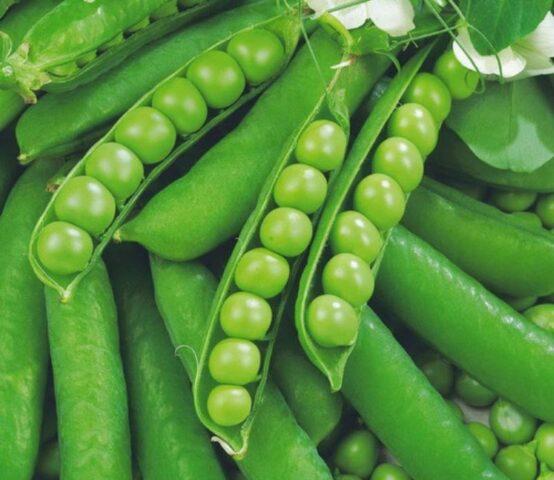
In accordance with the State Register of the Russian Federation, Alfa peas belong to canned varieties, but they are also good when fresh.
Advantages and disadvantages of the variety
The State Register of the Russian Federation indicates that the Alpha variety is intended for commercial use. This is facilitated by the uniform size and color of the beans, as well as other benefits:
- early and amicable ripening;
- outdoor cultivation;
- resistance to cold, spring frosts;
- admission to cultivation in most regions;
- no support required;
- good immunity to ascochitosis and fusarium;
- great taste;
- universal purpose;
- the ability to use as a siderat.
The variety has few disadvantages:
- low productivity;
- instability to some diseases, pests.
Growing Alpha peas from seeds
Growing Alpha peas outdoors is easy. The culture prefers sunny areas, you can sow it under apple trees. The protection of the chosen place from the wind is important.
When to plant Alpha peas
Alfa peas are planted in open ground from the third decade of April, in the south from the end of March. You should focus on the climatic conditions in the region. For seed germination, a temperature of 2-5 ° C is needed, the culture is not afraid of frost, it loves the soil moistened by melted snow. Due to the early maturity, sowing can be continued until early July.
Seed preparation
To prevent diseases, increase and accelerate germination, seeds are prepared before planting. When using self-collected material, immerse it in salted water (1 tbsp. L. With a slide for 1 l) for a few minutes. Throw out all emerging specimens, rinse the rest.
General algorithm for preparing pea seeds for sowing:
- Stratification. Soak the planting material for two hours in hot water. Maximum temperature 55 ° C.
- Disinfection. You can use a solution of potassium permanganate, boric acid. For prophylaxis, treatment within 15 minutes is sufficient.
- Soak in clean water for 12 hours to speed up germination. This step is optional. If desired, you can use stimulants such as Epin, Zircon, Albit.
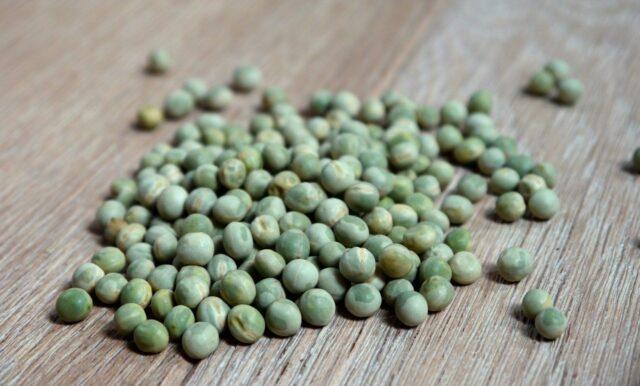
You can germinate peas before sowing - soak for 10-12 hours, wrap in cloth, keep at room temperature for two days
Garden and soil preparation
Alpha peas feel better on sandy loam, loam and clayey areas. The recommended soil is neutral acidity 6.5-7 pH, a slightly acidic reaction is permissible. If the indicators are overestimated, dolomite flour, lime, chalk are added in the fall. When digging in the spring, ash is needed.
It is necessary to prepare a place for planting Alfa peas in the fall. Deep digging, removal of weeds, application of potassium-phosphorus fertilizers are required. Fresh manure cannot be used. In the spring, it is better to re-dig the area, especially when the soil is heavy.
Sowing rules
After preparing the site and seeds, planting peas is easy. The algorithm is as follows:
- Loosen the ground.
- Make grooves or holes.
- If fertilizers were not used in the fall, add some compost or humus.
- Sow seeds.
- Sprinkle soil over the grooves.
- Compact the soil.
- Spread the covering material. It is needed not so much to protect against frost and accelerate seed germination, but from birds. You can use dry branches as a shelter.
Planting scheme for peas Alpha 10x15 cm. Seeds need to be buried by an average of 5 cm, focus on the characteristics of the soil. The consumption rate of seed per 1 m² is 15-20 g. After planting, it takes about 1.5 weeks to germinate.
Outdoor pea care
Alpha peas are unpretentious in care. Culture needs a standard set of activities.
Watering
Alpha peas need regular hydration. The frequency of irrigation should be oriented to the stage of the growing season and weather conditions. At first, it is enough to moisten the peas every week. As soon as the first peduncles begin to appear, increase the frequency of watering up to 2-3 times a week. Consume 10 liters of water per 1 m². Frequent watering is needed not only during flowering, but throughout the entire harvest.
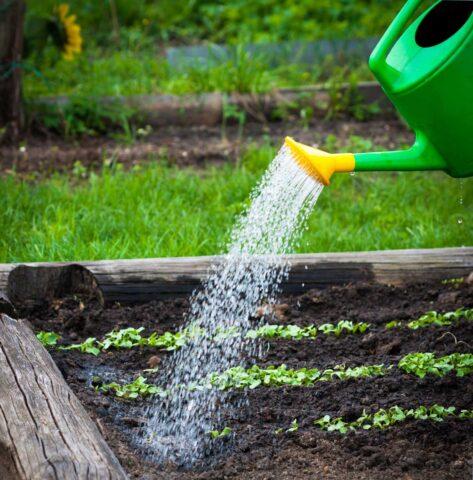
When growing peas Alpha, the land should not be allowed to dry out, this leads to the fall of peduncles and ovaries
Top dressing
With proper preparation of the site, the peas should be fed twice during the growing season. You can use liquid organic matter by dissolving 1 tbsp. l. in 10 liters of water. This composition is used for root dressing, consuming 3 liters per 1 m². Fertilizers are applied at the beginning of flowering, then when the first blades appear. At the same time, you can use organic growth stimulants, treating the culture with them using a spray bottle.
Another option is to use mineral fertilizers. The first top dressing is needed when the seedlings grow to 5-8 cm. The fertilizer is scattered over the site, watered abundantly. For 1 m², 25 g of the mineral complex is enough. Reuse a similar amount of fertilizer, but dissolve it in a bucket of water and spill the aisles.
Topping
Pinching peas is necessary to increase the number of side shoots. The event is carried out until the stems reach a height of 20-25 cm. You only need to pinch the tops.
Garter
Organization of supports and tying Alfa peas are optional conditions. The variety is semi-dwarf. Due to the low height and the plexus of the whiskers, the plants are independently held in an upright position.
It is still better not to exclude the organization of supports and the Alfa pea garter. This provides the crop with more sunlight, which is necessary for growth, development and maturation. The cultivation of peas with the help of supports facilitates harvesting, gives the plantings a neat appearance.
Weeding, loosening
Weed vegetation from pea beds must be removed regularly for better growth and development of culture, prevention of diseases and pests.Proceed with caution, as pea stems are easy to break or accidentally pull out along with the root.
After watering and heavy rain, it is imperative to loosen. Without it, a crust forms on the soil, preventing the penetration of air and water.
Disease and pest control
Alpha peas can be affected by powdery mildew. A white felt bloom appears on the leaves and stems. There are several methods of struggle:
- preparations - Prozaro, Topaz, Revus, Tiovit Jet;
- folk remedies - onion peel, iodine, potassium permanganate, mullein infusion.
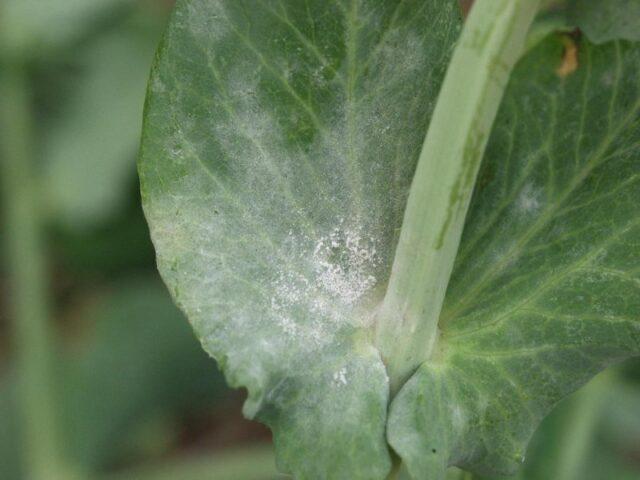
Plants affected by powdery mildew must be removed and burned to prevent the spread of the disease.
Variety Alpha can be affected by the pea moth. Insect larvae cause harm. As a result, the yield, market value, and seed quality of the crop are reduced. The loss of germination reaches 40%. Against the pea moth, drugs are used:
- Caesar;
- Tsunami;
- Bassoon;
- Alfas;
- Chord;
- Fufanon;
- Aktara;
- Shar Pei.
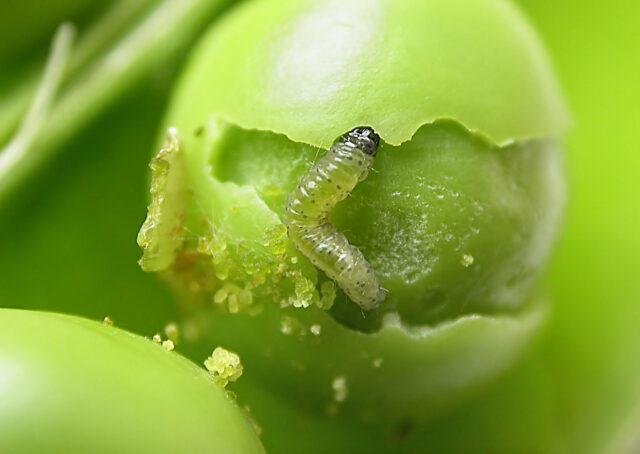
For the prevention of the pea moth, it is important to observe the sowing time, harvest the crop in a timely manner, and burn plant debris.
Another pest of Alpha peas is nodule weevils. They infect crops in spring, emerging after wintering at temperatures of 3-5 ° C. Dry and hot weather contributes to the problem. Insecticides are used to combat:
- Vantex;
- Clotiamet;
- Tibor;
- Lannath.
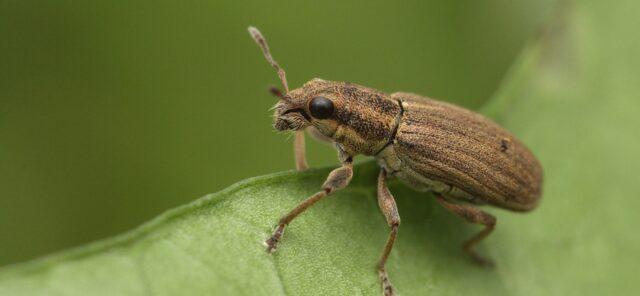
For the prevention of nodule weevil, autumn plowing and loosening, regular weeding, and crop rotation are necessary.
Conclusion
Peas Alfa is a shelling variety included in the State Register of the Russian Federation and approved for use in almost all regions. The culture is grown for fresh consumption, canning. They plant it with seeds in open ground, care should be comprehensive.
Reviews of peas Alpha








